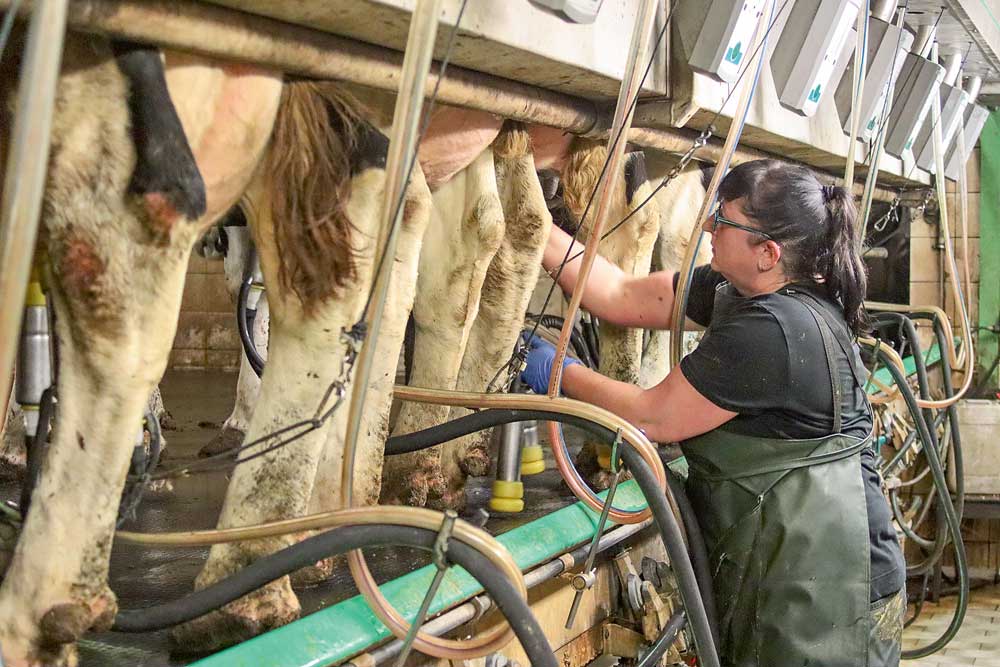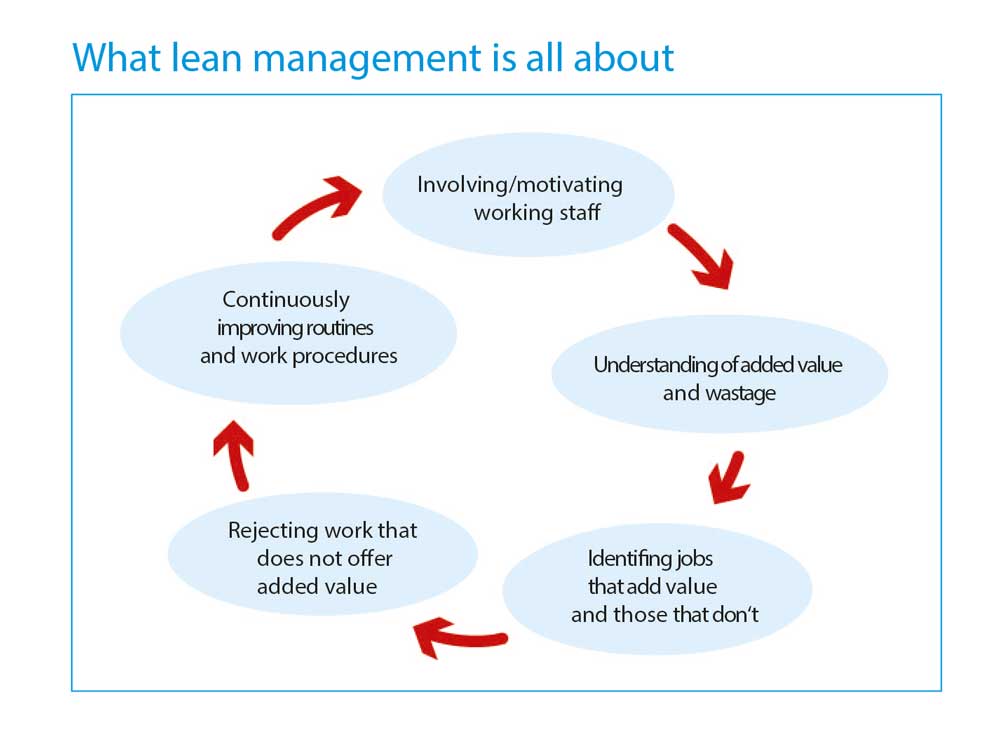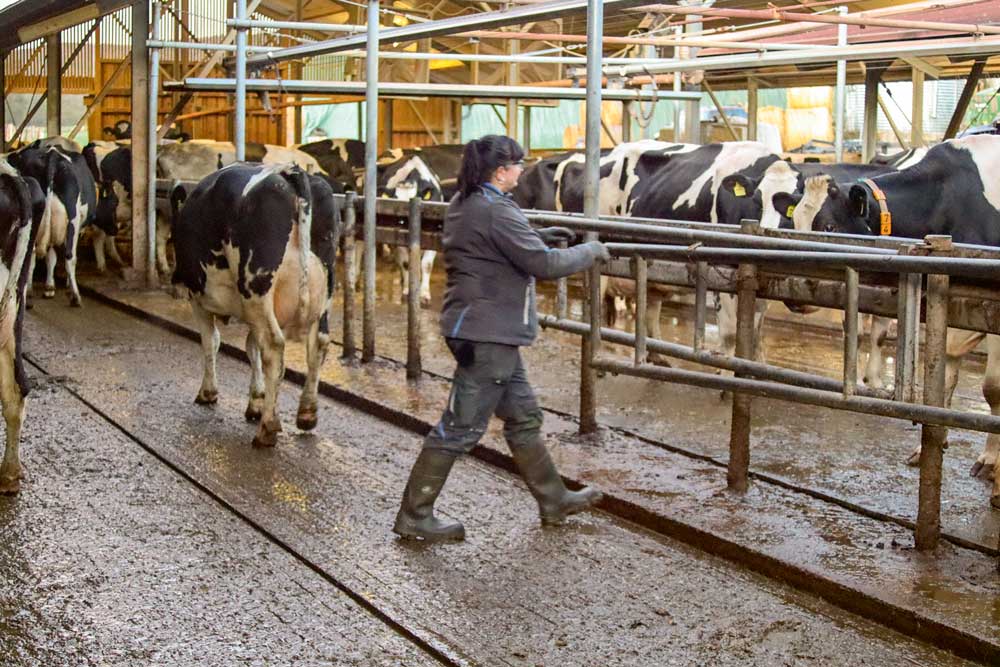Lean management: Seeking the time-stealers
By Bianca Fuchs, DLG Mitteilungen
Do you sometimes wonder why milking time on your farm takes much longer than on your neighbour’s - even although your parlour is larger, with better equipment and with more staff?
Yes? Then maybe you should take a closer look at your labour organisation. There could be room for improvements in work procedures.
Optimising the way we work
This is where so-called »lean management« can help, a technique originally designed for application in car manufacture. But agriculture can be helped too. The concept was presented at the autumn meeting of the European Dairy Farmers (EDF) German group by Susanne Pejstrup from Denmark. The philosophy: reorganising work procedures and responsibilities on the farm to establish less wasteful routines, to slim-down the process and harmonise one task with the next. Also, to introduce the technique as a continuous one for ongoing optimisation. Not only farms with employees can benefit from lean management. »Family farms with no outside labour can profit too, explained Susanne Pejstrup. »Dairy farmers should not simply work towards earning more from milk sales, or from meeting consumer requirements. Most important of all is what the internal customer wants: the farm, with its cows.«
The basic principles of lean management are (also see graph):
- Involving, and so motivating, those working on the farm through, for instance, discussions as management tools.
- Understanding the difference between added value and waste. Even small alterations can add effective value.
- Recognising the actions that bring more value, and those that do not.
- Rejecting actions that don’t add value.
- Continuous improvement of routines and work procedures.
Avoiding all that’s unnecessary
In this respect, it’s firstly important to identify time-stealers and where waste takes place in the farm business:
- Overproduction: When, for instance, more milk is produced than can be sold at a good price. Or when above-average numbers of youngstock are retained for replacements.
- Waiting: Downtime often crops up in work procedures. These gaps must be identified and eliminated. Whether it’s waiting for a machine, a workmate or a feed advisor. Or where there are too many milking personnel in the parlour pit.
- Unused talent: Meant here, for instance, is where work is carried out with the hands, and not the head. Often employees have good ideas and suggestions for improving working routine. But no one asks them, and they are left to continue with routine tasks barely requiring independent thinking. Some workers would be better employed on other jobs on the farm.
- Transport: On many farms, distances covered are too long. Or machinery capacity doesn’t fit requirements – the farm is either under-motorised or else over-motorised. A further example concerns journeys that could have been shorter with appropriate planning. For instance, where some feed is stored out on a field or when livestock are kept in a number of locations.
- Too much inventory: Example: excess forage is stored »just in case«. And, for the same pessimistic reasons, unnecessary feed is bought in.
- Unnecessary journeys/wasted effort: Spare parts are not kept in a central location. Time is wasted searching for tools. Feeding with the wrong shovel is also an example, as is incorrect working posture, the continuous searching for lost items, or forgotten work methods. And carrying out tasks the wrong way.
- Superfluous work: A good example here? Tidying up too often!
- Defects: These occur when, for example, job routines are not clear. Results can include ill or dead animals, or poor quality feed. Bad communication also contributes to these problems and thus lead to »defects«.
- Dynamic is the key word in lean management. To be avoided are pauses in work process, waiting time is minimised.
Analysing milking procedure
Let’s get back to our initial example by visiting the dairy parlour again. At the EDF meeting, participants analysed the total milking procedure, including driving the cows into the parlour, which was a side-by-side with rapid exit system with two milkers in the pit. Both had extra jobs during milking time such as cleaning cubicles, collecting the cows and bedding the calving pens. When milking started, one worker stayed in the pit while the other first drove cows into the waiting area and then cleaned cubicles before helping with the actual milking. For the analysis, time involved in each work step was recorded and distances covered sketched onto a plan of the buildings. Created thereby was a so-called »spaghetti diagram«, clearly revealing any unnecessary distances. Depicting the actual situation was a so-called »value stream analysis« and notes of unnecessary time-stealers marked on a chart showing the timed milking operation. Also noted were recommended solutions for any unnecessary work identified, or work that needed more effort than deemed necessary.
Recognising improvement possibilities
On the example farm the main time-stealers identified were slow-milking cows holding-up the whole procedure in the parlour. On top of this, both milkers in the pit together led to periods of unnecessary waiting, at least for one of the milkers. The milking could be carried out by just one person. A further criticism were the distances walked by the cows when milking groups were changed. Groups being herded to the waiting area started off moving in the opposite direction to the parlour and then had to be turned.
Summary
It pays to put work procedures on the farm under the microscope for a much closer examination of details. Also helping sometimes is an outsider’s view, someone who’s not normally involved in the day-to-day routines. In this way, reserves of time and work may be discovered. And then even smallest changes in the carrying out of various tasks can have positive results.





